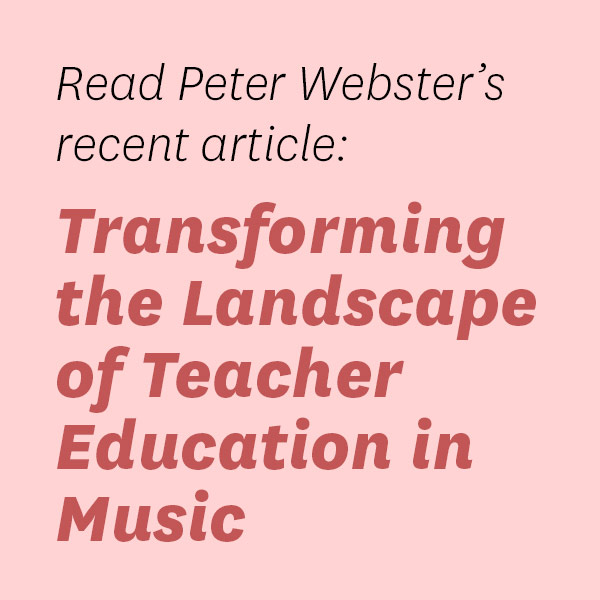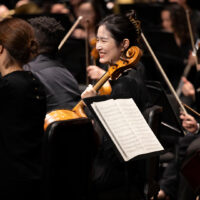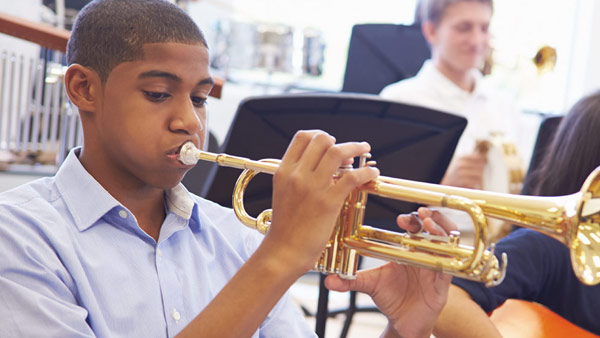
Transforming the Landscape of Music Teaching Degrees
By Kyle Sparkman
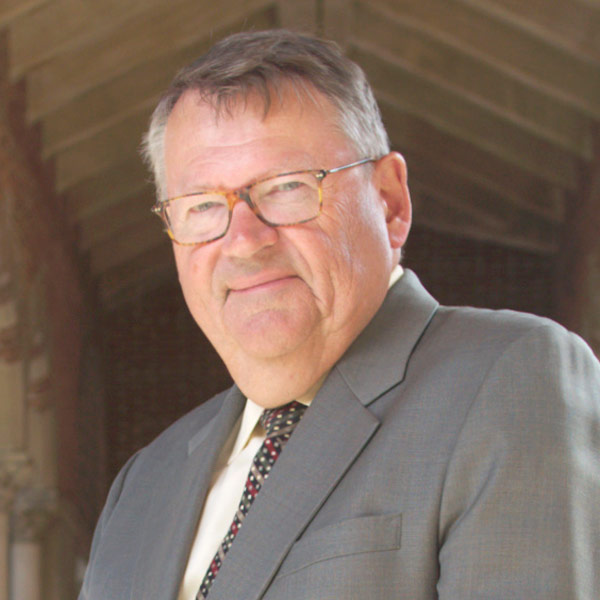
“Helping students understand music more completely is a rewarding experience,” said Peter Webster, scholar in residence in the department of Music Teaching & Learning. “However, students are learning and interacting with music in brand new ways.”
As Webster previously discussed, this shift is leading many music schools to transform the landscape of teacher education in music and prepare teachers with new ways to engage their students.
A music teaching degree gives musicians the unique opportunity to inspire students through creative expression and the responsibility to foster the development of a new generation of musicians and music lovers. There are several graduate degrees in music that offer specialized pathways to becoming a progressive leader in music education.
“Many teachers enter the field of K-12 music education by earning an undergraduate degree in music education and passing the state certification requirements built into this degree,” said Webster. “Others arrive at a music teaching career after earning a bachelor’s degree in performance or other undergraduate music majors and then enrolling in a professional master’s degree in music teaching that also includes state certification.”
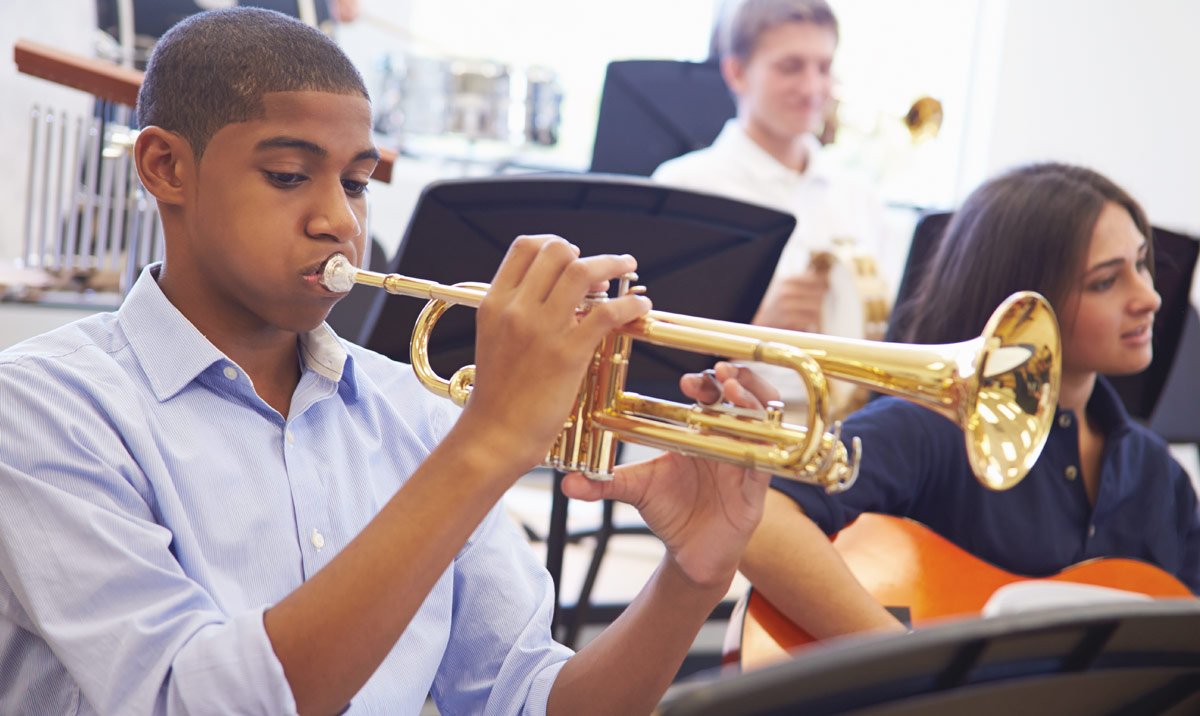
Degrees Available
Master of Music in K-12 Contemporary Teaching Practice
Not all students have the advantage of an undergraduate degree in music education with state certification. They likely earned an undergraduate degree in music performance, composition or another major and have decided later to teach in schools.
“Instead of taking a second undergraduate degree, a much better pathway is to find a master’s degree that combines certification with other traditional masters work,” Webster said. “Some schools offer a Masters in Teaching (MAT) degree that includes only the basic educational theory courses required for certification. These programs are fairly common nationally and generally support very traditional approaches to music education.”
USC Thornton offers an MAT-like program that includes state certification, but does so in a very different and transformative way.
“Today’s music educators face exciting and challenging times as students become more diverse, embrace a wider variety of musical styles and engage with music in their own sophisticated ways,” said Judy Lewis, the new director of the K-12 Contemporary Teaching Practice degree program.
To equip contemporary music teachers with the skills they need, USC Thornton developed the Master’s degree in K-12 Contemporary Teaching Practice.
“To elevate the standard for music education in K-12 schools and increase student engagement, we realized the traditional music education degree programs needed to be updated,” said Webster.
Traditional music teaching methods and lower school budgets for music teachers means the effectiveness of music education in K-12 schools is being compromised. “Many students are overlooked or underserved by traditional approaches to music education,” said Webster.
And public schools have it the hardest. “If you look at music education in Los Angeles public schools, you’ll see a strong need to engage a wide array of diverse students,” he added. “One of the things the K-12 Contemporary Teaching Practice degree focuses on is preparing teachers with the skills they need to reach urban demographics in an accessible way—through culture, music and technology.”

Teacher and USC Thornton alumnus Vince Womack, at center, rehearsing on stage with his students at the James Foshay Learning Center in South Los Angeles. (Photo by Dario Griffin)
Vince Womack, a Thornton alum and music teacher at the James Foshay Learning Center in south Los Angeles, is a great example of the versatility of contemporary music teachers who are elevating music education.
The K-12 Contemporary Teaching Practice program is a hybrid degree offered in partnership with the Rossier School of Education. Enrolled students will benefit from premier instruction in both general and musical education. This program provides a credential pathway for students who want to teach in public or private schools in California and other states. Students move through the intensive, 12-month curriculum as an intimate cohort, providing reflection, feedback and support for each other.
Beyond this scope of contemporary music teaching and learning proficiency, graduates will leave with a rich understanding of the contemporary music education landscape, a personal vision of their place in it, and mentorship from USC Thornton during their first year of teaching.
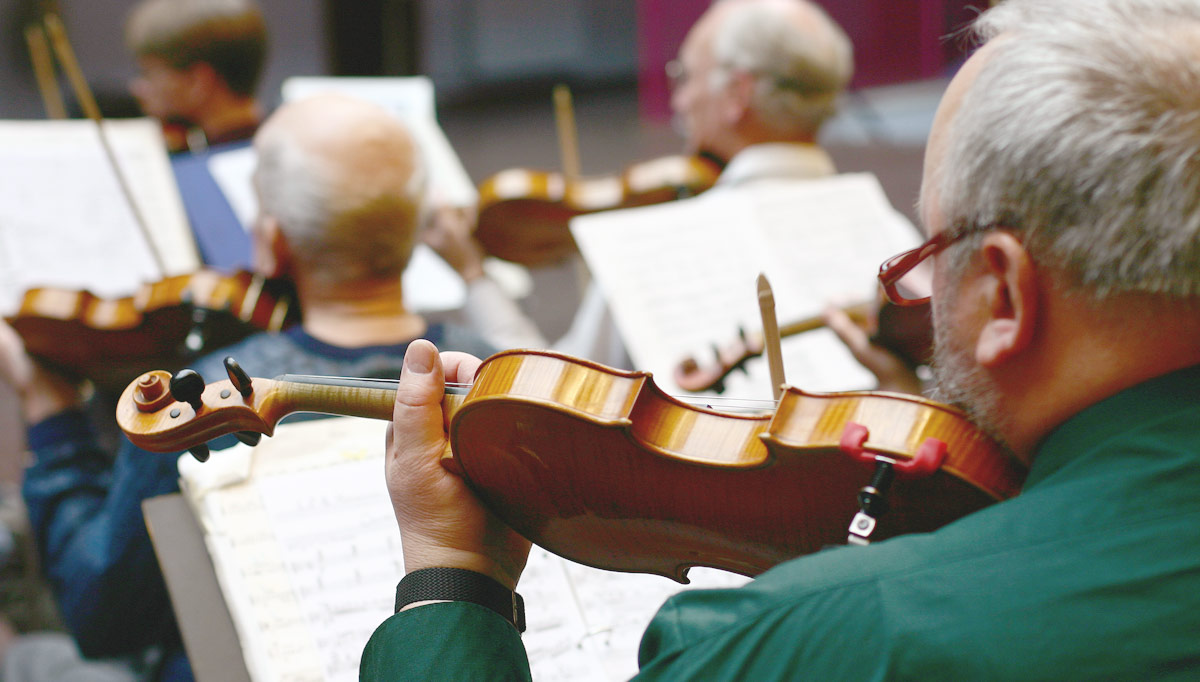
Master of Music in Community Music
There is also one other exciting pathway for music teaching that is not focused on K-12 schools. Check out Thornton’s Master of Music in Community Music degree, which prepares students to become leaders in their communities by offering music teaching and performance outside of schools.
“This program is designed for musicians looking to bring music instruction and performance into non-traditional settings such as prisons, hospitals and senior living communities,” said Webster.
Students develop skills in community engagement, applied music teaching, administration and more. While the Community Music program covers some aspects of music education, it is primarily a service-oriented program for musicians looking to teach beyond the classroom.

Master of Music in Music Education
Many students pursue a master’s degree in music education following an undergraduate degree in music education that includes state certification. “You’ll learn educational theory just as you would in a general education program, but a master’s degree in music education dives deeper into music pedagogy and music instruction methods,” said Susan Helfter, chair of the department of Music Teaching & Learning at USC Thornton.
Graduate degrees in music education are an extension of the undergraduate music curriculum and build on those skills established with state certification. You can expect advanced coursework in philosophy, sociology, psychology, history and pedagogy. Many music education master’s degrees require a thesis project or some other capstone experience.
“The content of this degree is often designed for support of traditional band, orchestra and choir programs as well as teaching in the general music classroom,” Webster said. “These masters programs are plentiful across the nation.”

Master of Music in Music Teaching & Learning
In a similar way, USC Thornton offers a Master of Music in Music Teaching & Learning (MTAL) program that builds on the foundation of a traditional undergraduate-level music education program.
The MTAL degree, however, prepares certified teachers to teach elementary and secondary music education at a much more advanced level. Students choose from core courses in individual instruction, conducting, arranging, composing, ensemble and other music electives. Unlike other masters programs across the country, students take intensive courses that examine music teaching and learning research and view the music instruction landscape from multiple perspectives: sociological, psychological or philosophical, depending on the student’s professional ambitions. The MTAL degree concludes with a thesis or research directive and a capstone project. Students leave ready to teach at a more advanced level or continue on to a doctorate program.
“For students interested in collegiate education, the Master’s in Music Teaching & Learning degree offers a smooth transition to Thornton’s Doctorate of Musical Arts or other doctoral programs,” said Webster. “With the doctorate program here at USC, there’s a strong emphasis on creative work, research and developing well-rounded teachers.” Students in the Doctor of Musical Arts (DMA) program go on to teach music at colleges, conduct exciting research and teach in community music settings.
Getting Started
When planning your music career with teaching in mind, it’s important to do your research and evaluate the subtle differences between Master’s programs in Music Education.
Explore the new landscape of contemporary music education and where you fit in. If you have an undergraduate degree in music education and are a certified teacher, consider a Master’s degree in Music Teaching & Learning. If you are not yet certified to teach but have a strong undergraduate degree in music and want to be a community music teacher, consider a Master’s in Community Music.

